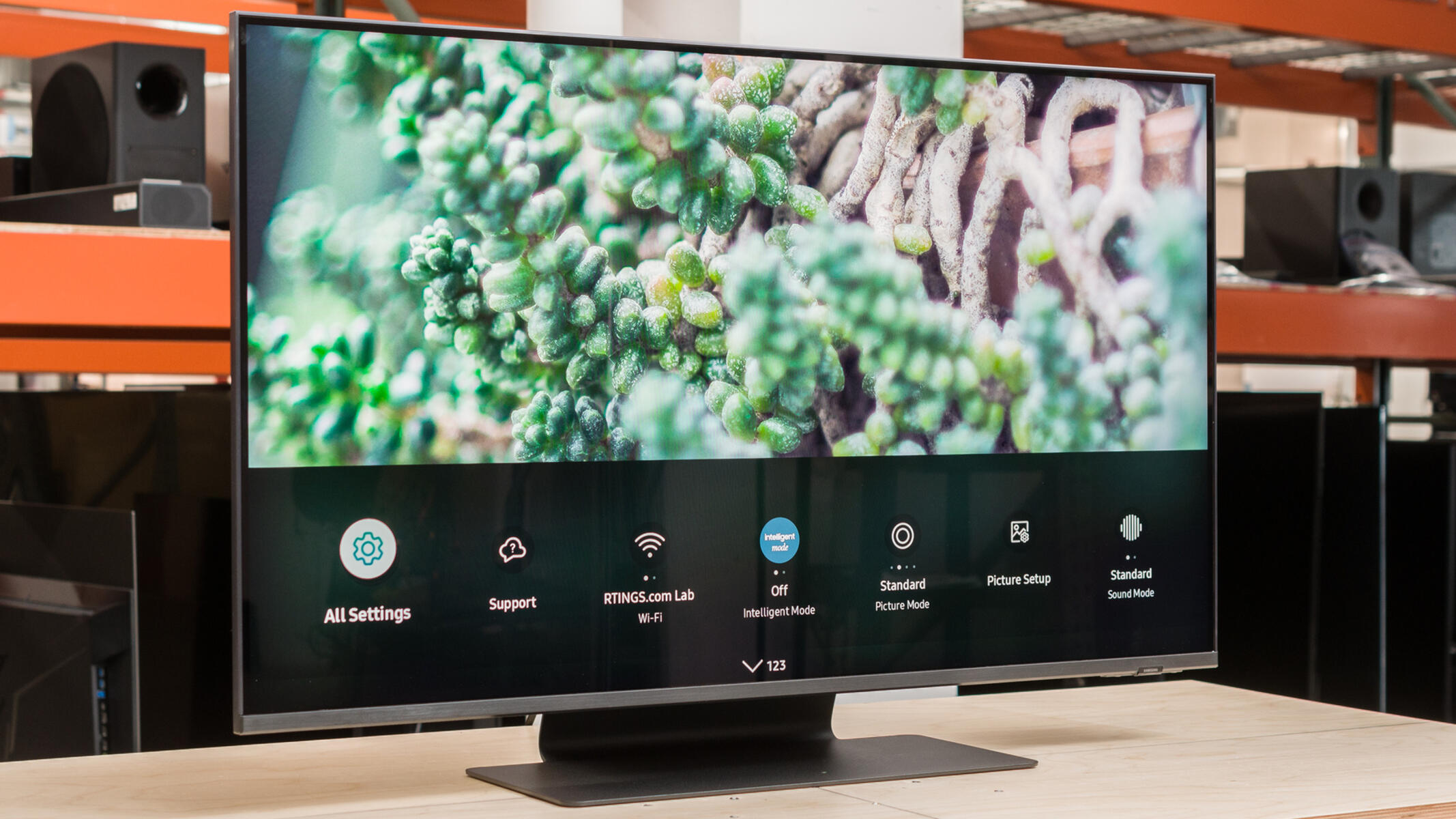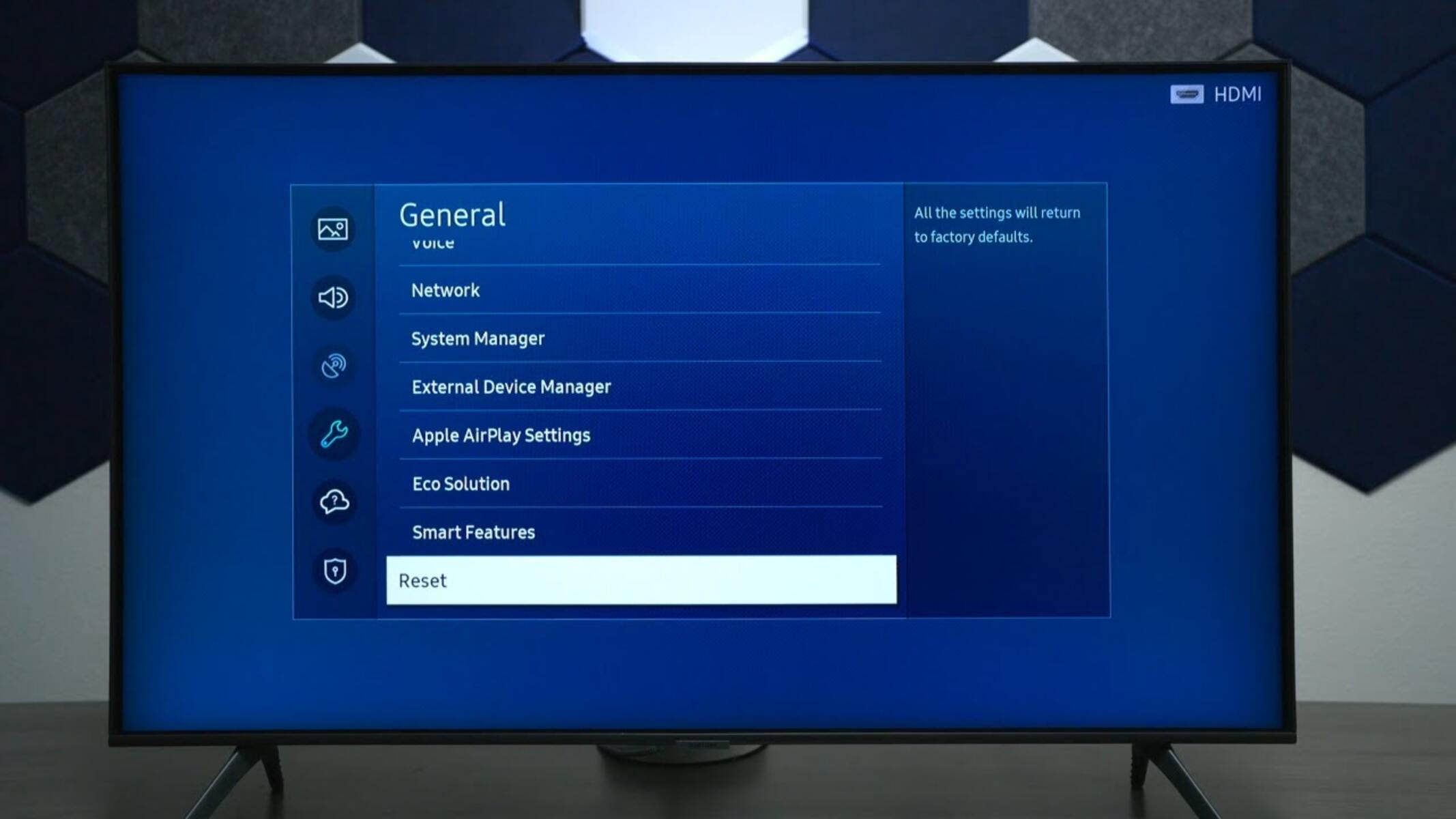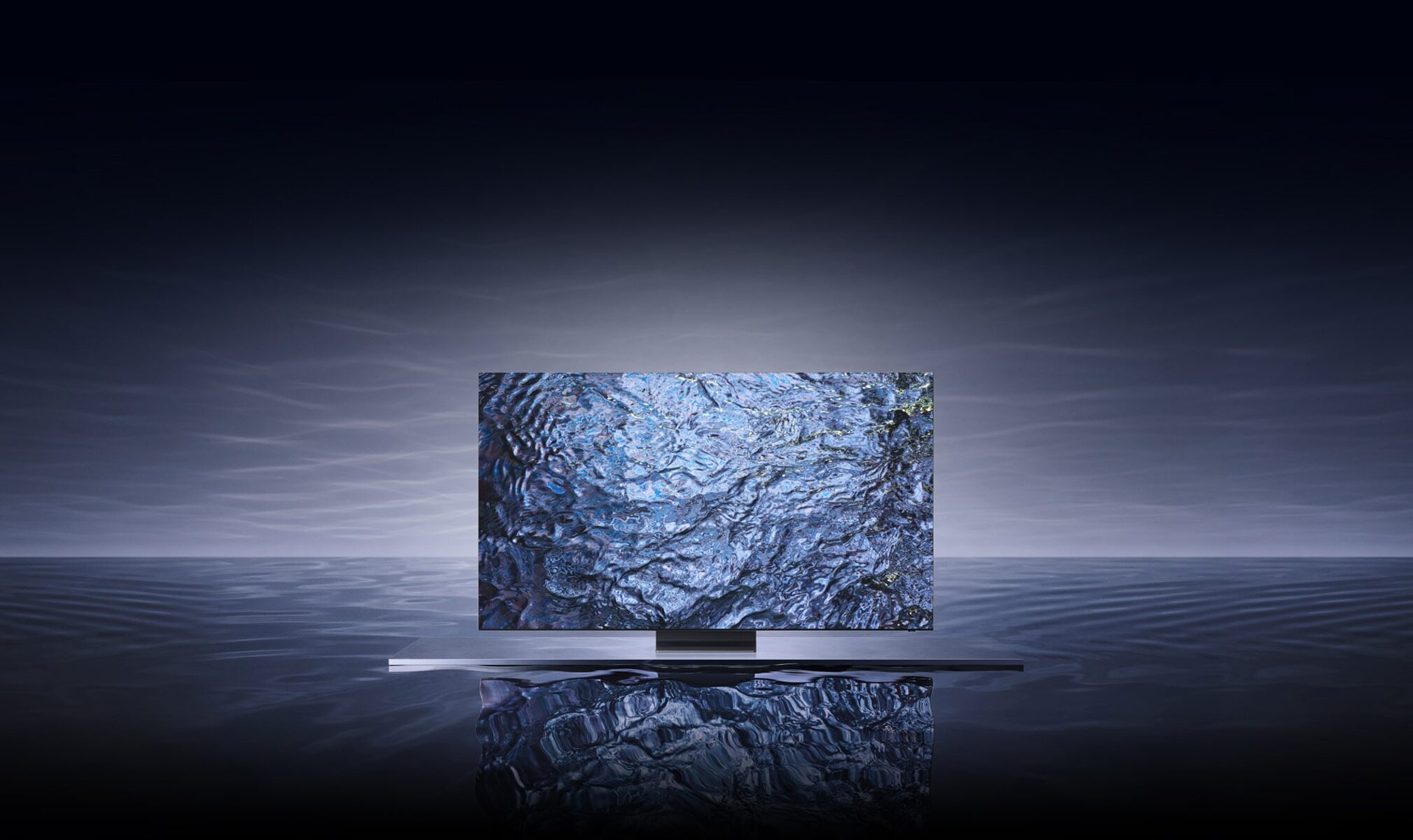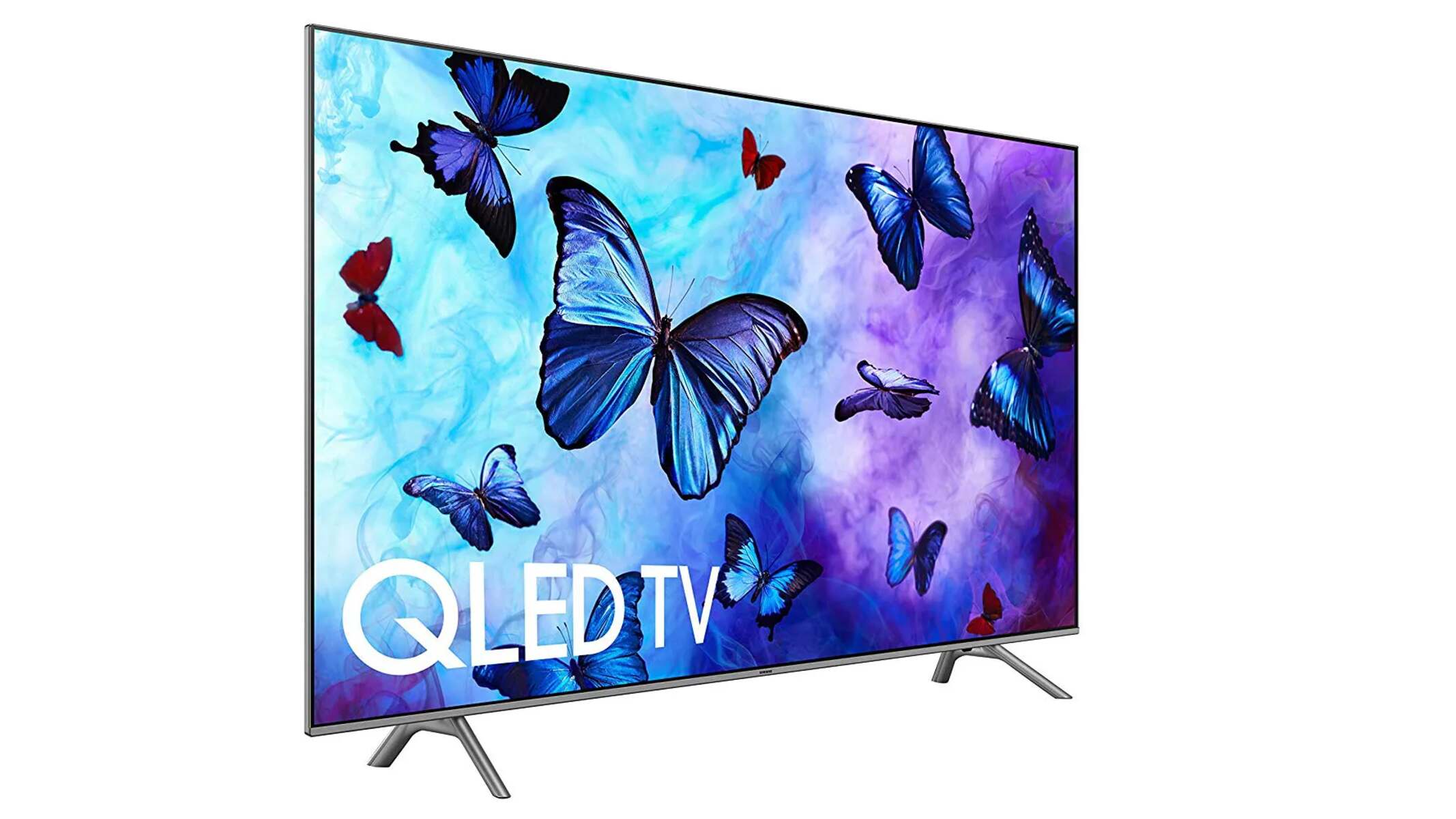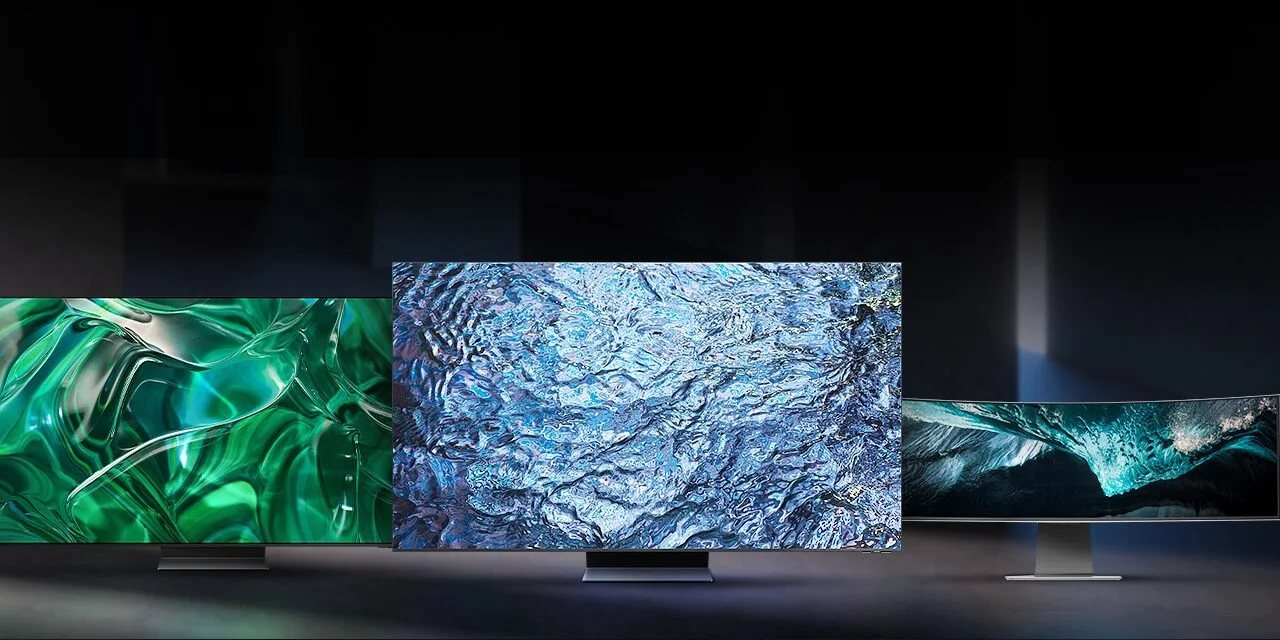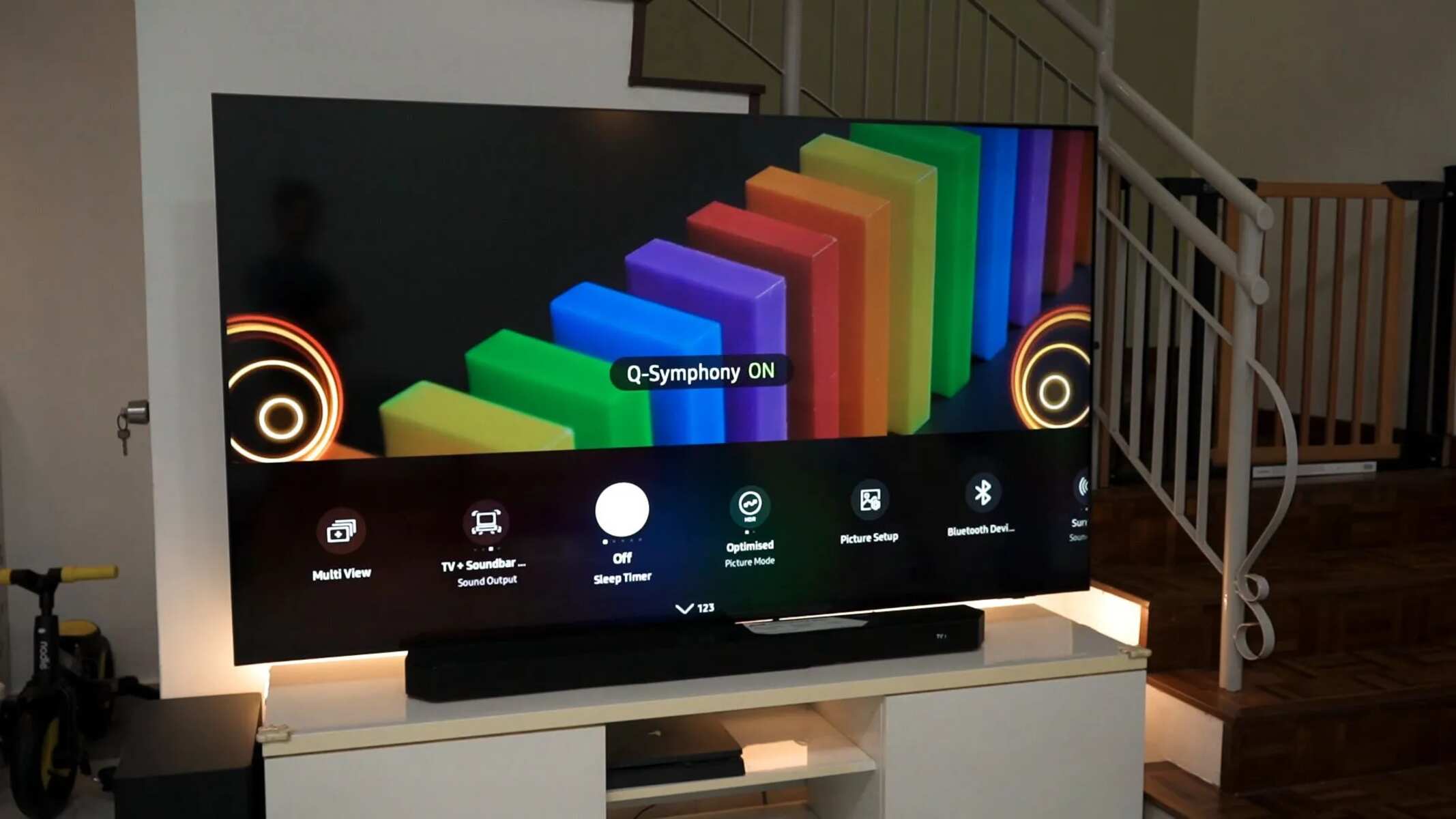Introduction
Welcome to our guide on how to fix the Samsung QLED TV screen. Samsung QLED TVs are known for their stunning picture quality and cutting-edge technology. However, even the most advanced TVs can encounter issues with their screens. Whether you are experiencing blurry images, color distortion, or a blank screen, we are here to help you troubleshoot and resolve the problem.
A malfunctioning TV screen can be frustrating, especially when you’re in the middle of watching your favorite show or movie. Fortunately, many screen-related issues can be resolved without the need for professional assistance. By following the troubleshooting steps in this guide, you can get your Samsung QLED TV screen back to its optimal performance.
Before we delve into the troubleshooting steps, it’s important to note that some TV issues may be due to external factors such as faulty cables, improper connections, or power fluctuations. By ruling out these possibilities first, you can narrow down the exact cause of the problem and implement the appropriate solution.
In the following sections, we will address some common issues with Samsung QLED TV screens and guide you through the steps to resolve them. From checking the power source to adjusting picture settings and performing a software update, each troubleshooting step is designed to help you regain the best possible picture quality on your Samsung QLED TV.
Keep in mind that although these troubleshooting steps are generally effective, some screen issues may require professional assistance. If you have tried all the steps in this guide and the problem persists, we recommend contacting Samsung customer support or a qualified technician. Now, let’s dive into the common issues and troubleshooting steps for Samsung QLED TV screens.
Common Issues with Samsung QLED TV Screen
While Samsung QLED TVs are known for their exceptional picture quality, they can sometimes encounter issues that affect the viewing experience. Here are some of the common issues you may face with your Samsung QLED TV screen:
- Blank Screen: One of the most frustrating problems is when you turn on your TV, but the screen remains blank. This issue can be caused by various factors, such as faulty power supply, loose connections, or a software glitch.
- Blurry or Distorted Images: If the images on your Samsung QLED TV appear blurry or distorted, it can greatly impact your viewing experience. This issue can be caused by incorrect picture settings, a weak or unstable broadcast signal, or problems with the source device.
- Color Banding: Color banding refers to visible bands of different colors appearing on the screen, particularly during transitions or gradients. This issue can occur due to limited color depth settings, compression artifacts in the source content, or a software issue.
- Screen Flickering: If your Samsung QLED TV screen flickers intermittently, it can be irritating and distracting. Screen flickering can be caused by incompatible display settings, a faulty backlight, or a problem with the power supply.
- Screen Burn-in: Screen burn-in occurs when static images or logos are displayed on the screen for a prolonged period, resulting in permanent image retention. This issue can happen if you consistently display static content without allowing the pixels to refresh.
- Unresponsive Touch Functionality (for touchscreen models): Some Samsung QLED TVs have touchscreen capabilities. If the touch functionality becomes unresponsive, it can be due to calibration issues, software glitches, or problems with the touch sensor.
These are just a few examples of the common problems you may encounter with your Samsung QLED TV screen. It’s important to identify the specific issue you are facing in order to implement the appropriate troubleshooting steps. In the next section, we will guide you through a series of troubleshooting steps to help you fix these issues and restore your Samsung QLED TV screen to its optimal performance.
Troubleshooting Steps for Samsung QLED TV Screen
If you’re experiencing issues with your Samsung QLED TV screen, there are several troubleshooting steps you can take to diagnose and resolve the problem. Follow these steps one by one until the issue is resolved:
- Check the Power Source: Ensure that your TV is properly plugged into a working power outlet. Try using a different power cord or socket to rule out any power-related issues.
- Examine the HDMI Connections: If you’re experiencing a blank screen or no signal, check the HDMI connections between your TV and external devices. Ensure that the cables are securely plugged in and that the correct input source is selected.
- Adjust Picture Settings: Access the settings menu on your Samsung QLED TV and navigate to the picture settings. Experiment with the brightness, contrast, sharpness, and color settings to find the optimal balance for your viewing experience.
- Update Software: Outdated software can cause various issues with your TV screen. Check for software updates in the settings menu or visit the Samsung website to download and install the latest firmware.
- Reset TV Settings to Default: If you’ve made extensive changes to the settings and are unsure which ones may be causing the issue, you can reset your Samsung QLED TV to its factory default settings. This will revert all settings back to their original state.
- Perform a Picture Test: Most Samsung QLED TVs come with a built-in picture test feature. Access this feature in the settings menu to display a test pattern on the screen. If the test pattern appears distorted or abnormal, it may indicate a hardware issue.
- Check for Physical Damage: Inspect the screen for any visible cracks, scratches, or physical damage. If you notice any, it’s advisable to contact Samsung customer support or a professional technician for further assistance.
By following these troubleshooting steps, you can often diagnose and resolve common issues with your Samsung QLED TV screen. However, it’s important to note that some problems may require advanced technical knowledge or professional assistance to fix. If the issue persists after completing these steps, don’t hesitate to reach out to Samsung customer support or consult a qualified technician for further guidance.
Check the Power Source
One of the first troubleshooting steps you should take when experiencing issues with your Samsung QLED TV screen is to check the power source. It may seem obvious, but a simple power-related problem can often be the culprit behind a blank screen or other display issues. Follow these steps to ensure that power-related issues are ruled out:
- Verify the power cable: Start by checking if the power cable is securely connected to both the TV and a working power outlet. Ensure that there are no loose connections or frayed cables that could hinder the power supply.
- Try a different power outlet: If you’ve confirmed that the power cable is correctly connected, but your TV still doesn’t turn on, try plugging it into a different power outlet. Sometimes, the power source itself may be the problem.
- Check for power fluctuations: Power fluctuations can disrupt the functionality of your TV. If you notice frequent power outages or fluctuations in your area, consider using a voltage stabilizer or surge protector to safeguard your TV and prevent potential damage.
- Test with a different power cord: If you have access to another compatible power cord, you can try swapping it to see if the current power cord is causing the issue. This will help determine if the power cord is faulty.
- Allow the TV to reset: In some cases, your Samsung QLED TV may experience a temporary power-related glitch. To address this, unplug the power cord from the TV and wait for a few minutes before plugging it back in. This can trigger a soft reset and resolve minor power-related issues.
By checking the power source, you can eliminate power-related issues as the cause of the problem. If your TV still doesn’t turn on or if the screen issue persists after performing these steps, it’s recommended to move on to the next troubleshooting method to further diagnose and resolve the problem.
Examine the HDMI Connections
If you’re facing a blank screen or no signal on your Samsung QLED TV, the next step is to examine the HDMI connections. HDMI cables are commonly used to connect external devices like gaming consoles, Blu-ray players, or streaming devices to your TV. Loose or faulty HDMI connections can cause display issues. Follow these steps to ensure that your HDMI connections are properly set up:
- Check the HDMI cable: Start by inspecting the HDMI cable connecting your external device to the TV. Ensure that the cable is securely plugged into both the HDMI port of the device and the corresponding HDMI input port on your Samsung QLED TV.
- Try a different HDMI cable: If you suspect that the HDMI cable may be causing the problem, try replacing it with a known working cable. This will help determine if the issue lies with the cable itself.
- Verify the input source: Use the remote control or the buttons on the TV to navigate to the correct HDMI input source. If multiple HDMI ports are available on your TV, make sure that you have selected the appropriate one for the connected device.
- Check for loose connections: Gently wiggle the HDMI cable on both ends to ensure a secure connection. Loose connections can cause intermittent or no signal issues. If necessary, unplug and re-plug the HDMI cable to establish a solid connection.
- Inspect the HDMI ports: Carefully examine the HDMI ports on both your TV and the connected devices for any visible damage. Bent or broken pins inside the HDMI ports can lead to poor or no signal transmission.
- Test with another device: If possible, connect a different device using the same HDMI cable and port to rule out any issues with the specific device or the port itself. This will help identify if the problem lies with the original device or the TV.
By examining the HDMI connections and ensuring that they are properly set up, you can eliminate any potential issues related to loose or faulty connections. If the screen issue persists even after checking the HDMI connections, proceed to the next troubleshooting method to continue diagnosing and resolving the problem.
Adjust Picture Settings
Incorrect picture settings can often lead to issues with the display quality of your Samsung QLED TV. If you’re experiencing blurry images, color distortion, or other visual anomalies, adjusting the picture settings may help improve the overall picture quality. Follow these steps to adjust the picture settings on your Samsung QLED TV:
- Access the picture settings menu: Using the remote control, navigate to the settings menu of your Samsung QLED TV. Look for options related to picture settings, which may be labeled as “Picture”, “Display”, or something similar.
- Adjust the brightness and contrast: Start by adjusting the brightness and contrast settings. These settings control the overall luminance and intensity of the image. Increase or decrease the values gradually until you achieve a balanced brightness and contrast that suits your preference and viewing environment.
- Tweak the color settings: Next, adjust the color settings to ensure accurate and vibrant colors. Look for options such as “Color”, “Saturation”, or “Hue”. Experiment with these settings to achieve a realistic color representation that enhances your viewing experience without oversaturation or desaturation.
- Modify the sharpness: Sharpness affects the level of detail and edge definition in the image. However, excessive sharpness can introduce artificial artifacts. Find the sharpness control in the picture settings menu and adjust it until you find a balance that maintains clarity without creating unwanted artifacts.
- Turn off unnecessary image processing features: Some Samsung QLED TVs come with additional image processing features, such as motion smoothing or noise reduction. These features can sometimes interfere with the natural image quality. Experiment with disabling or adjusting these features to see if it improves the overall picture quality.
- Save your changes: Once you’ve made the desired adjustments, save the changes in the picture settings menu. Some TVs may automatically save the settings, while others may require you to confirm and exit the settings menu to apply the changes.
By adjusting the picture settings, you can optimize the display quality of your Samsung QLED TV to match your personal preference and viewing environment. Keep in mind that every TV model may have slightly different settings and terminology, so refer to your TV’s user manual or online resources for specific instructions tailored to your TV model. If the screen issue persists or worsens after adjusting the picture settings, proceed to the next troubleshooting method to continue investigating and resolving the problem.
Update Software
Outdated software can sometimes be the root cause of various screen issues on your Samsung QLED TV. By updating the software, you can ensure that your TV is equipped with the latest bug fixes and performance enhancements. Here’s how you can update the software on your Samsung QLED TV:
- Access the settings menu: Using your TV’s remote control, navigate to the settings menu. Look for options like “Settings”, “Setup”, or “System”.
- Find the software update section: In the settings menu, locate the section related to software updates. It may be labeled as “Software Update”, “System Update”, or “Firmware Update”.
- Check for updates: Within the software update section, select the option to check for updates. Your TV will connect to Samsung’s servers or the Internet to search for available software updates.
- Download and install updates: If a software update is found, follow the prompts to download and install the update. This process may take several minutes, so be patient and avoid turning off or unplugging the TV during this time.
- Restart your TV: After the software update is successfully installed, it is recommended to restart your TV. This ensures that the updated software is properly applied and any potential conflicts are resolved.
Regularly updating the software on your Samsung QLED TV can help fix known issues, improve compatibility with external devices, and enhance overall performance. If your TV has the option for automatic software updates, enable it to ensure that you receive future updates as soon as they become available.
Note: It is important to have a stable internet connection during the software update process. If your TV does not have an ethernet port for a wired connection, ensure that you have a strong Wi-Fi signal for a reliable update.
If the screen issue persists or worsens even after updating the software, proceed to the next troubleshooting method to further diagnose and resolve the problem.
Reset TV Settings to Default
If you’ve made extensive changes to the settings on your Samsung QLED TV and are unsure which settings may be causing the screen issue, resetting the TV settings to default can help resolve the problem. Resetting the settings will revert all changes back to their original factory defaults. Here’s how you can reset the TV settings:
- Access the settings menu: Using your TV’s remote control, navigate to the settings menu. Look for options like “Settings”, “Setup”, or “System”.
- Locate the reset or factory reset option: In the settings menu, find the section related to resetting the TV. It may be labeled as “Reset”, “Factory Reset”, or “Initialization”.
- Select the reset option: Once you’ve located the reset option, verify that you want to proceed with resetting the TV settings. This may require entering a password or confirming the action.
- Start the reset process: Follow the on-screen prompts to initiate the reset process. Be aware that resetting the settings will erase any personalized configurations and preferences.
- Wait for the reset to complete: The TV will go through the resetting process, which may take a few minutes. Avoid turning off or unplugging the TV during this time to prevent any potential software conflicts.
- Complete the initial setup: Once the reset is complete, the TV will reboot and prompt you to perform the initial setup. Follow the on-screen instructions to set up your TV again.
By resetting the TV settings to default, you can eliminate any misconfigured settings that may be causing the screen issue on your Samsung QLED TV. However, be aware that this reset will remove any customizations you have made, so you may need to go through the settings menu again to adjust them to your preferences.
If the screen issue persists or worsens even after resetting the TV settings to default, proceed to the next troubleshooting method to further investigate and address the problem.
Perform a Picture Test
If you’re still experiencing screen issues on your Samsung QLED TV, performing a picture test can help determine if the problem lies with the hardware or software. The picture test is a built-in feature in most Samsung QLED TVs that displays a test pattern on the screen. Follow these steps to perform a picture test:
- Access the settings menu: Using your TV’s remote control, navigate to the settings menu. Look for options like “Settings”, “Setup”, or “System”.
- Find the picture test option: In the settings menu, search for the section related to picture settings or display. Look for an option labeled “Picture Test”, “Self-Diagnosis”, or something similar.
- Select the picture test option: Once you’ve located the picture test option, select it to initiate the test. The TV will display a test pattern on the screen, usually consisting of various shapes and colors.
- Observe the test pattern: Carefully observe the test pattern displayed on the screen. Look for any abnormalities, such as distorted shapes, flickering, color banding, or other visual artifacts. Note any issues you observe during the test.
- Exit the picture test: After completing the picture test, exit the test by pressing the appropriate button on your remote or following the on-screen instructions.
The picture test helps to assess whether the screen issues are related to the hardware or software of your Samsung QLED TV. If you notice any abnormalities or issues during the picture test, it may indicate a hardware problem that requires professional assistance for repair or replacement.
On the other hand, if the test pattern appears normal without any noticeable issues, it suggests that the problem may be related to the software or settings of your TV. In such cases, consider updating the software, adjusting the picture settings, or trying other troubleshooting methods outlined in this guide to resolve the screen issue on your Samsung QLED TV.
If the screen issue persists or worsens even after performing the picture test and implementing the necessary troubleshooting steps, proceed to the next method for further diagnosis and resolution.
Check for Physical Damage
If you have gone through the previous troubleshooting steps and are still facing screen issues on your Samsung QLED TV, it’s important to check for any physical damage that could be causing the problem. Physical damage to the screen can result in various display issues. Follow these steps to check for physical damage:
- Inspect the screen: Carefully examine the surface of your Samsung QLED TV screen for any visible cracks, scratches, or dents. Use a flashlight if necessary to ensure that you can thoroughly inspect the entire screen.
- Look for discoloration or dead pixels: Pay attention to any areas of the screen that appear discolored or contain dead pixels, which are small black or colored spots that don’t display any image. These issues can indicate damage to the screen’s pixels.
- Check for impact damage: If your TV has been accidentally bumped, dropped, or exposed to excessive force, it’s possible that the internal components or the screen itself may have been damaged. Look for signs of impact damage, such as dents or cracks on the TV frame.
- Inspect connections and ports: Apart from the screen, check the connections and ports on the TV. Ensure that the HDMI ports, power ports, and other interfaces are not damaged or loose, as this can affect the performance of the screen.
- Perform touch functionality test (if applicable): If your Samsung QLED TV has touchscreen capabilities, perform a test to check if the touch functionality is working appropriately. If the touch response is inconsistent or unresponsive, it may indicate a hardware issue.
If you discover any physical damage or suspect that your Samsung QLED TV has been damaged, it’s recommended to contact Samsung customer support or a professional technician for further assistance. They can assess the extent of the damage and provide guidance on the necessary repairs or replacements. Keep in mind that attempting self-repairs on physically damaged screens can potentially cause further harm or void the warranty.
However, if there are no visible physical damages and the screen issues persist, consider exploring other troubleshooting methods or contacting Samsung customer support for further assistance in resolving the problem.
Conclusion
Dealing with screen issues on your Samsung QLED TV can be frustrating, but with the right troubleshooting steps, many problems can be resolved. In this guide, we have outlined various common issues with Samsung QLED TV screens and provided step-by-step solutions to help you troubleshoot and fix them.
We began by emphasizing the importance of ruling out external factors such as power source problems and checking HDMI connections. These basic checks can often resolve issues without the need for further troubleshooting. We then discussed the significance of adjusting picture settings, updating software, and resetting TV settings to default to optimize the viewing experience.
If the issue persists, we recommended performing a picture test to determine whether the problem lies with the hardware or software. Finally, we stressed the importance of checking for physical damage and recommended seeking professional assistance if any damage is identified.
Remember, resolving screen issues requires a systematic approach and patience. It is important to carefully follow the troubleshooting steps and consult the TV’s user manual or contact Samsung customer support if needed.
In some cases, however, the problem may be beyond your ability to fix. If you have tried all the troubleshooting steps outlined in this guide and the screen issues persist, it may be necessary to consult a qualified technician or contact Samsung customer support for further assistance.
We hope this guide has provided you with valuable insights and solutions to address the screen issues on your Samsung QLED TV. By following these troubleshooting steps, you can restore your TV’s optimal performance and enjoy a stunning viewing experience once again.









